THAT ANXIETY REACHED historically high levels during the Covid pandemic is not surprising. The previously unknown virus aroused a mix of uncertainty, fear and lack of control that is the perfect brew to put people on edge. Yet, more than two years later, with the threat having receded and most of life returned to normal, anxiety remains elevated.
Today, anxiety disorders are the most common mental health issue in the U.S., affecting one in three adults, according to data from the National Institute of Mental Health. The rates are even higher among business owners, with one recent study from the University of California, San Francisco finding half of all entrepreneurs surveyed suffered from conditions such as anxiety and depression. The reasons likely have to do with the wide-ranging responsibilities business owners shoulder as well as their constant focus on the vagaries of the future.
Jewelry retailers appear no different. According to INSTORE’s Brain Squad of owners and managers, when asked what is contributing to their level of anxiety right now, it’s everything from the increased amount of custom and repair jobs to a lack of walk-in traffic and quality employees to the nightly news on television. The concerns can be broad-based: As Georgie Gleim of Gleim the Jeweler in Palo Alto, CA, wrote, it’s the “overall level of angst floating around. The general antagonistic tone of public conversations and outright fear for our democracy.” Or they can be closer to home, as described by David Blitt of Troy Shoppe Jewelers in Calgary, AB: “Going to court to testify at end of May for a robbery, moving to a new store in June and getting married at end of July.”
From an evolutionary perspective, anxiety is easy to understand. It’s the emotion-fueled drive to know if a danger lurks around the bend. Compared to other animals, it gave humans a tremendous advantage. Of course, we no longer live on the savannah, and when we leave home, we can confidently assume we’ll return in one piece. Yet anxiety persists, a relentless fear-based planning scenario with no off-switch.
From a physiological standpoint, what happens when we get anxious is that a structure in the brain called the amygdala — the seat of fear — gets fired up and releases stress hormones such as adrenaline and cortisol, as well as glucose, into the bloodstream. Our heart, sweat glands and mental faculties all ramp up. We are now primed for a fight (or flight) for survival … which is happening entirely in our heads. It’s discomforting and exhausting.
And it’s not even very good at defining or predicting danger. We’re notoriously terrible at assessing risk; we worry about all the wrong things. We rely on anecdotes rather than data. We fear events that bring vivid imagery to mind, such as shark or terrorist attacks, but not cheeseburgers and road accidents, though the latter are far more of a threat. Compounding the torment is that our brains seem wired to resist uncertainty. (You have may heard of studies showing most people would rather receive a shock now that’s twice as painful as receiving a random shock in the next 24 hours.)
For some people, those worries create a debilitating negative spiral that can take over their lives. (And if anxiety is inhibiting your ability to function, to work, sleep and do even simple things like go out of the house, we recommend you seek professional help.) Overthinking, ruminating and angst can limit our ability to enjoy life to the fullest while also limiting our professional growth.
The standard advice to deal with anxiety is to live more fully in the present — embrace the moment! Be here now! Bring calm to your mind. But that is fiendishly difficult to do, as anyone who has tried even the most basic mindfulness exercise can quickly attest.
Advertisement
What to do? There’s no quick fix. In short, dealing with anxiety essentially involves learning to roll with life’s punches and applying a heavy dose of reframing.
First, know that a life without challenge would be boring. Abandon your need to establish complete security, and you realize you never needed it in the first place.
Second, as the Stoics liked to say: The obstacle is the way. The path to growth is to do difficult things. Consider the writer Elizabeth Gilbert’s approach, which essentially involves treating anxiety like an annoying younger sibling. The trick isn’t to ignore fear or to worry, but to make space for it. She uses the analogy of a road trip. “Fear always comes along for the ride, and that’s fine — but that doesn’t mean you need to let it anywhere near the steering wheel.”
In the following pages, we suggest ways for you to do that, as well as tips provided by our readers, mental health experts and psychology writers on actions to take when anxiety strikes, strategies to help you cope, and ways to build your resilience.
PART ONE: Explore Your Anxiety
Divert Your
Attention
A screaming baby, faced with a grownup making silly noises, will often fall silent; it can’t focus on being distressed and intrigued at the same time. Adults aren’t so different (ever tried playing Sudoku while ranting internally?). It has to do with our limited attentional bandwidth and why even minor acts of distraction — listening to music and focusing intently on the words, doing some basic math, focusing on the needs of others — can be very good ways to silence negative thoughts or buy time until emotions die down. “If I am dealing with problems, either listening to an audiobook while doing yardwork or playing guitar (poorly) helps,” says Jon Walp of Long Jewelers in Virginia Beach, VA. It’s important to distinguish healthy distraction from unhealthy avoidance, however. Binging on Netflix for 20 hours is more like unhealthy avoidance when an issue obviously needs to be confronted.
Postpone
Your Worries
Not prepared to stare your fears in the face? Schedule a meeting with them for later. “Try setting aside 20 minutes every day, let’s say at 4:30 PM, just for your worries. If you are fretting at 10:00 AM, jot down the reason and resolve to think it through later,” Dr. Robert L. Leahy, director of the American Institute for Cognitive Therapy, suggested to Real Simple. Safe in the knowledge that your concerns will be addressed, you can get on with your life. And it may just turn out that the issue vexing you will take care of itself in the meantime.
Ask
Questions
The unknown is the playground of anxiety. To identify the “unknown” that is bedeviling you, it helps to have a battery of questions. One of the best, from meditation teacher Sylvia Boorstein, is: “Is this useful?” Worrying about an upcoming client meeting can feel like you’re doing something substantial about a potential problem, but in truth you’re not. This is particularly the case when it involves something you have no control over. Other helpful questions: “What’s the threat here? What am I actually afraid of? Have I heard this before?” Such questions fire off the prefrontal cortex, which can relieve the anxiety.
Play the
5-5-5 Game
Another way to halt ruminating about possible dire future events and get back to the present is to take stock of your immediate physical surroundings with a method known as the 5-5-5 game:
Look around and name five things you can see.
List five things you can hear.
Move five parts of your body you can feel (i.e., rotate your ankle, wiggle your ears, nod your head up and down).
Other physical interventions recommended as circuit-breakers for spiraling thoughts include taking a cold shower or dip in a pool, or sniffing lavender oil.

Breathe
The onset of anxiety has been compared to a hijacking of your amygdala, that more primal part of your brain responsible for your fight-or-flight response. The key is thus to re-engage your thinking brain, convince it you are actually safe, and talk your mind down from the edge. And one of the best ways to do that is with deep breathing, which raises oxygen levels and helps expunge the carbon dioxide that builds up when you’re stressed. “I do three slow breaths in a row, in through the nose and out through the mouth. It helps in the short term and gives me a little reset,” says Katrina Sustachek of Rasmussen Diamonds in Racine, WI. The 4-7-8 method (inhale for four seconds, hold for seven and exhale for eight) is probably the best known, but box breathing (instoremag.com/boxbreathing), a method used by the Navy SEALS that also involves slow, controlled breathing, is also proven to work, as does the double inhale championed by popular podcaster Dr. Andrew Huberman (instoremag.com/physiologicalsigh).
Dwell on the
Worst-Case
Scenario
“Set aside a certain number of days, during which you shall be content with the scantiest and cheapest fare, with coarse and rough dress, saying to yourself the while: ‘Is this the condition that I feared?’” The world is a far less turbulent place than when Seneca uttered that thought 2,000 years ago, but it has lost none of its saliency. Articulate your deepest fears in fine detail and you’ll likely find you can handle whatever eventuates. The blogger Tim Ferriss, who has probably done as much as anyone to re-popularize Stoic thinking, recounts on his blog how he used this approach to tame fears related to a major life decision: “A funny thing happened: as soon as I cut through the vague unease and ambiguous anxiety by defining my nightmare, the worst-case scenario, I wasn’t as worried about taking the trip. Suddenly, I started thinking of (ways) to get back on track if all hell struck at once. I could always take a temporary bartending job to pay the rent. I could sell some furniture and cut back on eating out. I could steal lunch money from the kindergarteners who passed by my apartment every morning. The options were many. I realized it wouldn’t be that hard to get back to where I was, let alone survive. None of these things would be fatal—not even close.”

Talk the
Self-Talk
Cognitive therapy’s main insight — that how we think about a situation determines how we feel, so by addressing distorted thinking, we can feel better — is now such a self-help mainstay, it’s hard to appreciate how revolutionary it was 50 years ago. Yet, as well as its message is now understood, it is still easy to forget it when you feel yourself in the grip of anxiety. “It can be tricky at first, but these irrational ‘automatic thoughts’ that anxiety arouses usually come in the form of absolutistic musts, shoulds, oughts, and other demands such as ‘I must do well,’ ‘Others ought to treat me well,’ ‘Things need to work out the way I want them to,’” notes psychology blogger Eric Barker, citing the work of the pioneering cognitive psychologist Albert Ellis. This allows you to play a helpful game of “Find the Irrational Belief” when confronted with anxious feelings and then dispute it.
Next, turn those “musts” into realistic preferences. This thought: “I absolutely must do well during this presentation or my life is over,” can be converted into: “I’d like to do well, but if I don’t, it almost certainly won’t be that big a deal,” and the emotions will dial down.
Say an Affirmation
In the face of assault on our equanimity by anxiety, it can help to cling to short, positive statements to remind yourself that this mental storm is being caused by a transient and ultimately unimportant event. Such as:
- “It wasn’t that bad in the past.”
- “It won’t last forever. This too shall pass.”
- “This is going to be a good time … or a good story.”
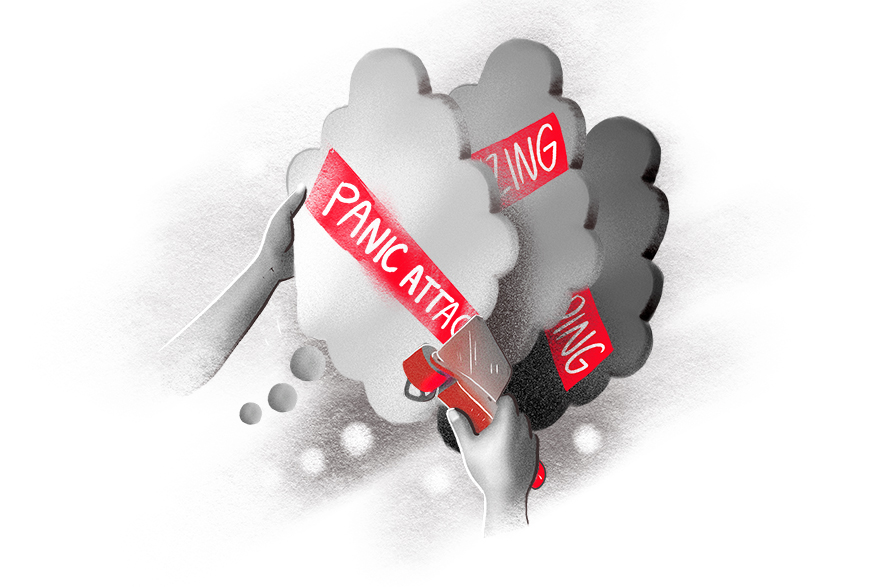
Name
the Trap
According to Dan Harris, the broadcast journalist and author of Ten Percent Happier, naming or labeling the thought patterns bedeviling you converts the vague threat they pose into something concrete you can deal with. “Just labeling it, just calling it out, and saying it out loud … It’s the visibility that is the kryptonite for the ego,” he said on a recent podcast. Identifying the thoughts and telling yourself “This is a panic attack”/“This is catastrophizing”/“This is mind reading”/“This is fortune-telling”/“This is black and white thinking” … allows you to regain power by realizing you’ve encountered it before and survived.
Write It
Down
If you’re particularly prone to catastrophizing, health experts say it can help to get the thoughts out of your head and down on paper. Dr. Martin Seligman, a professor at the University of Pennsylvania and author of Tomorrowmind, recommends creating an Anxiety Balance Sheet to turn your mental state around. The method: On a piece of paper, create four columns titled: “What Do I Know”/ “What Don’t I Know” / “What Can I Influence” and “What Can’t I Influence.” Then spend a few minutes filling in the columns. “About 80 percent of the people I’ve worked this through with are surprised that they have more items listed in columns one and three (the ‘good’ columns) than they do in columns two and four,” he told TIME. “Just the act of unpacking your anxiety bag and knowing what’s inside can have a profound effect on reducing your fear of the future.”
PART TWO: Coping with Anxiety
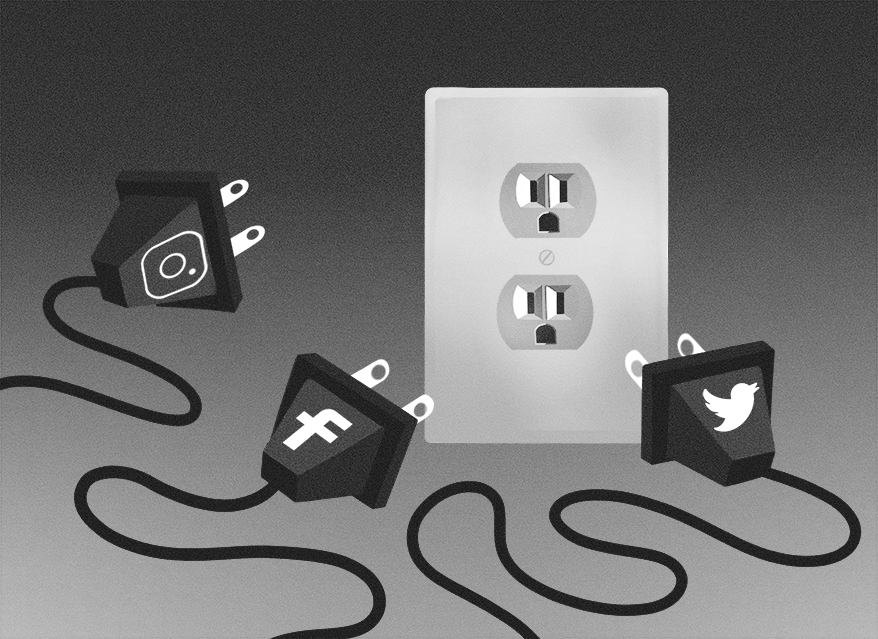
Unplug
Social media can serve as a salutary distraction (funny YouTube videos have been shown to help people deal with anxious thoughts) or to provide some validation or comfort via interaction with friends. But more often Twitter, Facebook, Instagram, TikTok — all of which are driven by algorithms designed to provoke emotional responses — will likely exacerbate negative feelings or just arouse guilt over wasted time. In his series of books on the theme of the benefits of doing “deep work” in an undistracted environment, Cal Newport has made a strong case for unplugging or setting strict boundaries around your phone use (e.g., leave it in your entryway when you return home). If unplugging is unrealistic, use the “mute,” “block,” “unfollow” or “not interested” functions to ensure that you are the one in control of the information flow.
Take Action …
Any Action
Action is the enemy of anxiety. Someone no less self-assured than Jeff Bezos has talked about how this plays out in his business life: “I find that as soon as I can identify it, and make the first phone call, or send off the first email, it dramatically reduces the stress I feel.” Thus, the advice when you feel yourself falling into rumination is to do something, anything! Jeremy Auslander of Roxbury Jewelry in Los Angeles writes, “I think the only answer is to push forward. Make more calls and emails to customers. Reach out to people that make good money in your area. Read the local magazines and congratulate individuals you see with articles written about them. Network. Work on the business.”
Yet, the problem is anxiety is also the enemy of action. When you’re feeling trapped by worry, it’s hard to raise the energy to do anything. The solution? Set the bar really low. As Nancy and Pierre Plante of Plante Jewelers in Swansea, MA, write, “Even the smallest step can relieve anxiety. It’s better than worrying and losing sleep. Analyze the situation and find one small thing you can do to get started.”
Try
Mindfulness
Meditation allows you to interrupt your thought patterns enough that you can break the cycle of anxiety. Focusing on some abstract element like your breath or a stone or a mantra creates a pause between the stimulus and the response. At a more proficient level, meditation allows you to examine your thoughts more deeply. “And that self-awareness, that regular sort of systematized collision we’re engineering in meditation with the voice in your head, is revolutionary because as soon as you start to see how chaotic your mind is, that’s the first step toward not being owned by it,” says Harris. In his book, The Untethered Soul, Michael Singer likens the chatter in your head to a crazy roommate. Through meditation, Singer says, you eventually learn to see your thoughts as distinct from you and learn to tell that roommate to shut up, to start justifying his claims, or at some level you just learn to dismiss them as a kind of paranoid rambling.

Eliminate
Stimulants
In THE ANATOMY OF ANXIETY, Dr. Ellen Vora uses the phrase “false anxiety” to encompass the agitated state that can arise from not enough sleep, forgetting to eat breakfast, or simply too much coffee. An elevated heart rate, shaking hands, or a quivering voice could be a panic attack, or it could just be the result of six shots of caffeine. Be aware and cut back on your consumption if that’s you. And to those Brain Squad respondents who jokingly cited drinking as a coping mechanism — and we say this lovingly — that’s likely not helping either.
Learn From
the Past
The problems you’re experiencing today seem fraught and important, but that’s mainly because you’re so narrowly focused on the present. This is the reasoning behind the old suggestion to ask yourself if your worries will matter in a decade. But you can do better than look hopefully into the future — look at the past instead. Try this exercise, as recommended by Burkeman: Every morning, make a brief note of what feels like your biggest problem. As the list accumulates, you can review earlier entries. “Guess how many months it took for my former worries to seem laughably overblown? Five days: that’s how many months …” he writes. “But that wasn’t the interesting part: what stood out was how many times reality bore no relationship to anything I’d anticipated. I’d worry about some event going badly, but instead of going badly or well, it’d be canceled. I would worry about how I’d handle some crucial conversation, but by the time it arrived, circumstances had changed, and it wasn’t crucial at all. My gut feelings weren’t so much overly negative as simply irrelevant.”
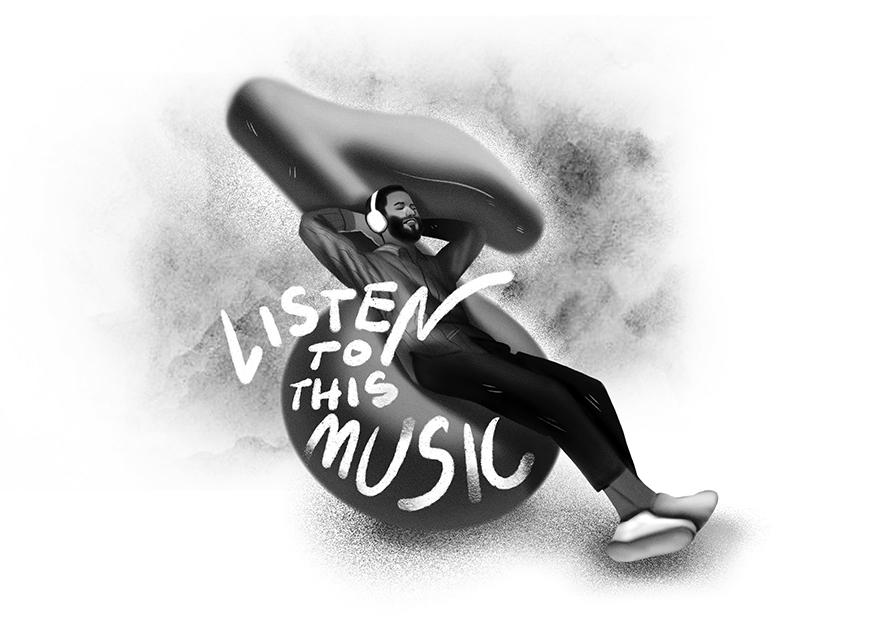
Listen to
Music
A little over a decade ago, British musicians teamed up with sound therapists to engineer a song specifically designed to calm the nervous system by lowering a person’s heart rate, blood pressure, and levels of the stress hormone cortisol. The eight-minute song, called Weightlessness (instoremag.com/weightless), was found to reduce anxiety by up to 65 percent. “The song … contains a sustaining rhythm that starts at 60 beats per minute and gradually slows to around 50,” Lyz Cooper, founder of the British Academy of Sound Therapy, told INC. Magazine. “While listening, your heart rate gradually comes to match that beat.”
As Mark Twain so deftly put it 150 years ago: “I am an old man and have known a great many troubles, but most of them never happened.”
Mind
Sweep
The organizational guru David Allen has built a vast international following with the idea that getting stuff out of your head and onto a to-do list is a path to mental calm and achievement. “Nothing changes when you write things down except how you engage with your issues: You can be objective and also be creative and intuitive. Without exception, you will feel better,” he says. Allen’s Getting Things Done system starts with a “mind sweep,” meaning listing all the tasks and responsibilities that need tending to, and which typically takes a business owner six hours to complete. The second crucial principle is what Allen calls “next action” thinking — his version of the homily “a journey of a thousand miles,” but which also encompasses the problematic issue of prioritization. And finally, his “weekly review” — an hour or so spent going over the list of all long-term projects and short-term next actions — which he says is a must to keep you on track.
If the very idea of an endless to-do list causes you angst, add a Kanban system that stores all your to-dos out of sight and out of mind, other than for the tiny handful that you’re working on right now.
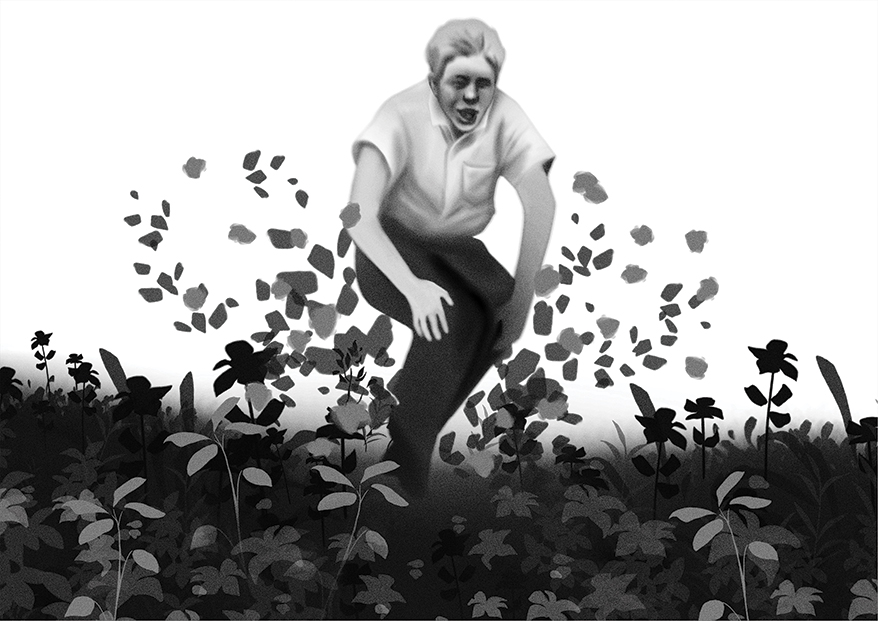
Bathe in
Nature
From 2004 to 2012, Japanese scientists spent $4 million studying the physiological impact of “forest bathing,” or spending time around trees. They found it reduces anxiety, boosts the immune system, and amplifies feelings of wellbeing. But you don’t need a forest. Time spent in any natural setting, parks, among animals (pets or wild) or near bodies of water can all relax the mind. As Jo Goralski of The Jewelry Mechanic in Oconomowoc, WI, says, “I have a meadow out my back gate that leads to a woods that has a small river running through it. If I need to destress, I head to the woods.”
For that matter, researchers at the University of Hyogo in Japan say that simply putting small plants on workers’ desks in an office “contributed to their psychological stress reduction regardless of their age or choice of plants.” The reason seems to be related to the way nature absorbs some of our attention in an undemanding way, giving us “cognitive quiet” and allowing our minds to relax as opposed to the relentless, aggressive demands on our attention made by much of the rest of the world, say U.S. academics Rachel and Stephen Kaplan.
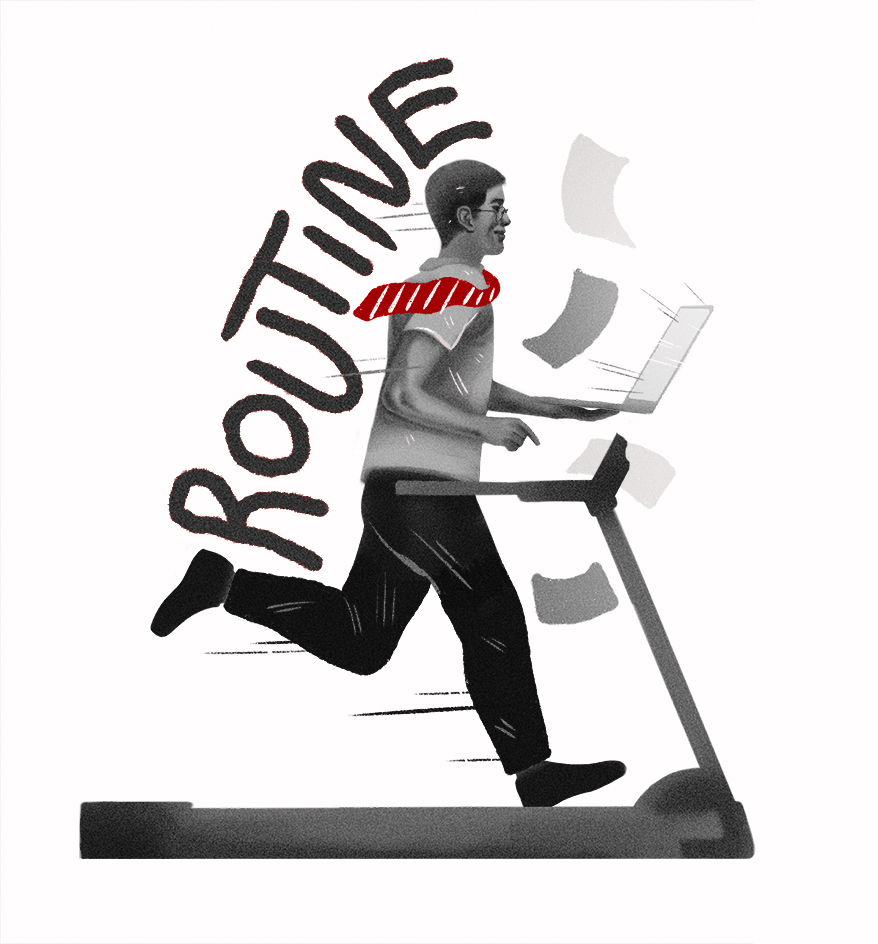
Routine
The word “routine” can be a pejorative, but it can also be a mind saver. “Routines help reduce general feelings of anxiety and are often effective antidotes for those with more serious mental health disorders,” writes Charlotte Lieberman in the Harvard Business Review. “Doing the same thing at regular intervals signals to our brains that we are safe. Call it a routine, a ritual, an anchor — whatever resonates,” she says.
PART THREE: Building Resilience
Build Social
Connections
Humans have evolved to be social creatures, and yet much in modern society — from the way our cities are structured, to the myth of individualism, to social media — is eroding the bonds between us at the cost of our mental health. Reasserting the primacy of human connection in your life — by being deliberate in creating new friendships, socializing with the family and colleagues outside the home or workplace — can thus be vital to dealing with anxiety, not just by boosting mood, but having someone to talk to when assailed by anxiety. As the author and anxiety therapist Mike Shel puts it: “Until a person feels understood, all the information in the world, all the data, all the scientific understanding of the process and coping strategies are for naught. A person needs to feel that someone gets what they are struggling with.”
Stay
Healthy
Diet, rest and exercise. The science is clear: People who take care of themselves are less prone to anxious thoughts. According to neuroscientists out of UC Berkeley, when you don’t get enough sleep, your brain’s amygdala and insular cortex both light up in a pattern similar to the abnormal neural activity of people with anxiety disorders. Meanwhile, a large-scale study of almost 200,000 cross-country skiers found that being physically active halves the risk of developing clinical anxiety over time. There’s also another reason exercise can help with anxiety, jokes Beth Cevasco of Scott’s Custom Jewelers in Dublin, OH: “A good hard workout makes me so sore, I forget about everything but ibuprofen.”
Try
TRE
Trauma Releasing Exercises (TRE) are a self-help technique designed to help release deeply held physical and emotional tension stored in the body. Advocates say TRE helps to release this tension and restore balance and wellbeing, improving an individual’s ability to cope with stress and reducing anxiety. Yes, it seems a little kooky, but the evidence is robust, and if not much is working to reduce your anxiety, you may want to give it a try. You can watch an eight-minute introductory video here: instoremag.com/tre.
Advertisement
Reframe
Anxiety
Tech entrepreneur Naval Ravikant has wondered publicly if he would have been as successful if he weren’t anxious, because anxiety “makes you get off your butt.” It’s an interesting view and a reminder that true mental health comes from recognizing and accepting the complete spectrum of emotions. Dr. Emiliana Simon-Thomas, science director at Berkeley’s Greater Good Science Center, told TIME we should relate to unpleasant emotions in a way “that’s more restorative — more growth- and learning-oriented.” Perhaps such feelings are a signal that we’re following the wrong path with our business or relationships. Instead of trying to erase this sensation, we should view anxiety as a tool.
Get Used to Being
Uncomfortable
None of this is to say anxiety will feel any better. Its evolutionary roots as a warning system mean it will always feel uncomfortable. Anxiety becomes maladaptive when it paralyzes. The answer is to appreciate that we humans are “anti-fragile” — we grow when challenged. When we know what’s required and can marshal the resources to cope with them, scary things become challenges rather than threats. In the words of the late psychologist Susan Jeffers, “feel the fear and do it anyway.”
MORE TIPS FOR RELIEVING ANXIETY
Trust in
Yourself
Trust that you have the physical and psychological resources to overcome this dreaded event that lies ahead. Talking of his propensity to fret about the unknown future, the writer Oliver Burkeman notes: “And of course the answer in every case — though apparently I need to keep relearning this lesson — is that we’ll cross that bridge when we come to it. We’ll figure it out then, based on what’s actually happening then, drawing on the internal and external resources we’ll have access to then. After all, when you stop to think about it, there isn’t really much of an alternative. When else can you cross a bridge, except when you come to it?”
Ask Yourself
For Advice
One of the cruel ironies of anxiety is that people often know the right responses when a friend or colleague is struggling with mental turmoil but can’t apply them when afflicted themselves. It is why health professionals recommend trying to add some distance to the problem, such as asking yourself what counsel you would offer a friend or a team member in a similar situation, or even talking to yourself in the third person. That’s what tennis great Ivan Lendl would do, as he explained via a post on MensTennisForum.com: “Say you’re nervous before a match, you admit it to yourself. You say, ‘Ivan is nervous today. But he’s going to snap out of it.’ You describe what you are feeling, and then you let go of it. And it’s over.”
Journal to
Unwind
It can seem at times that writing exercises are prescribed as a way to deal with every mental condition — and if you hated doing homework in high school (or work with words for a living), it’s probably the last thing you want to do. But the psychological benefits of externalizing thoughts via journaling are well-established, and you may indeed find the results revolutionary. There is no one set of best practice, but setting some rough guidelines for regular practice can help: Promise to do it for six minutes, or for three pages, do it first thing in the morning, destroy after finishing, archive them …. Whatever rules you come up, it’s usually best to keep the exercise solo, your own private domain to work through the thoughts that may be eating your mind. “Writing allows us to witness our thoughts as separate entities, to get them out of your head. Many of us are living life as if our thoughts are reality. Write down all your thought stream, uncensored. Let them flow and watch them leave the mind,” says the clinical psychologist Nicole LePera, author of HOW TO DO THE WORK.
Understand
the Triggers
According to some mental health literature, the 80/20 approach can also be applied to anxiety. Identify the 20 percent of issues or people that create 80 percent of your anxiety and seek ways to remove them from your life. If scrolling through social media leads to an unhealthy fixation on your appearance, avoid this specific trigger, Jodie Louise Russell, a doctoral student who studies the philosophy of rumination in depression and anxiety at the University of Edinburgh, told the NEW YORK TIMES. “Pay attention to situations that spike your anxiety — whether that’s getting feedback, writing important emails, being put on the spot, or starting the day with a messy desk. Keep a journal and look for patterns. When you know what makes you the most uneasy, you can better anticipate challenges and create a plan to deal with triggers.”
Advertisement
Habituate
Exposure therapy is the full realization of a tip mentioned earlier: testing to see if your thoughts are valid. Only rather than a mind game, it involves physically confronting your fears. If someone gets very anxious around spiders, the method would be to put them in closer and closer proximity to spiders until they learn much of their fear is unfounded. For social anxiety, it might involve something as simple as going up to 10 people and asking for the time. Such a regimen allows you to see nothing bad really happens and much of your imaginings are irrational. Habituate yourself to fear and it loses its power and control over you, notes Barker, calling such habituation the “gold standard” therapy for dealing with triggered anxieties.
Show Yourself
Some Compassion
Business coach Jerry Colonna says there are three basic risks that we’re all trying to manage: love, safety and belonging. It’s the existential fear that these needs could be threatened that is at the root of so much anxiety, he says. “I know for myself that the fear of disappointing others is a threat to my belonging. I’m not going to be in my family anymore. My children won’t love me. My partners won’t love me. I will be unsafe. I will be bereft. I’ll be alone in the woods, fending for myself …” And so goes the catastrophizing spiral. The key to dealing with such irrational thinking is self-compassion and accepting the fullness of ourselves, he argues in his book REBOOT: LEADERSHIP AND THE ART OF GROWING UP: “’I am enough and I’m doing the best that I can.’ If I can say that to myself every day in one form or another, that can be helpful.”
To help bring your mind around to such a perspective, he recommends journaling (regularly using “I am enough” as a prompt) and metta meditation, a.k.a. “loving-kindness meditation.” Yes, it sounds woo-woo, as Colonna acknowledges, but when it comes to anxiety, we are often our own our worst enemy, given the primary source of our negative thoughts is ultimately ourselves.